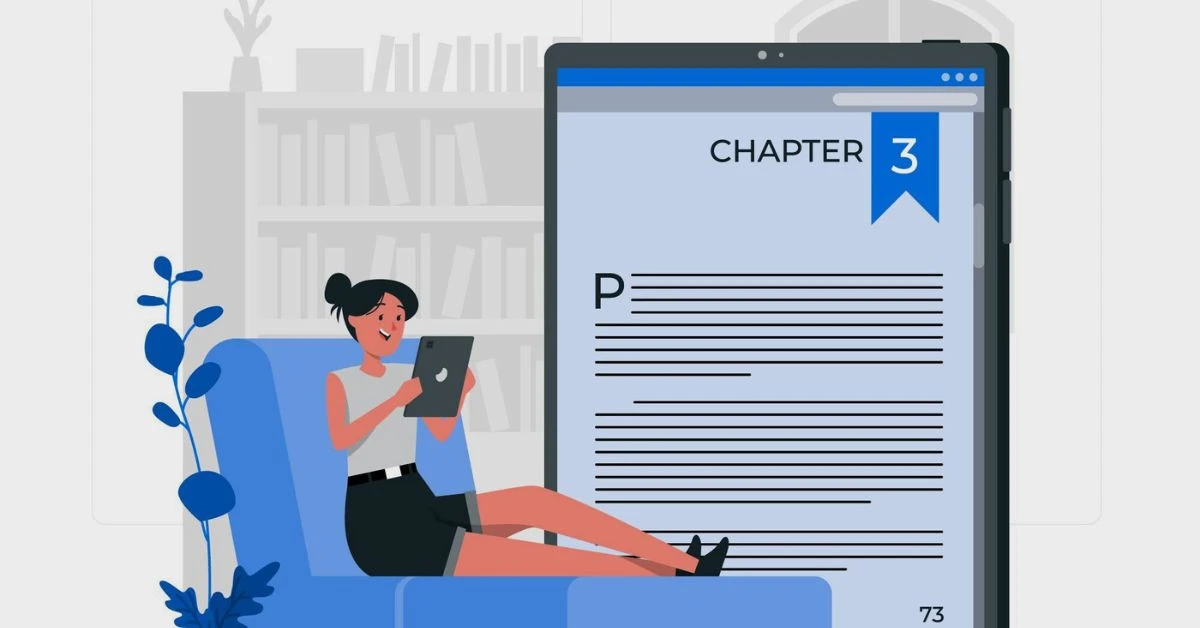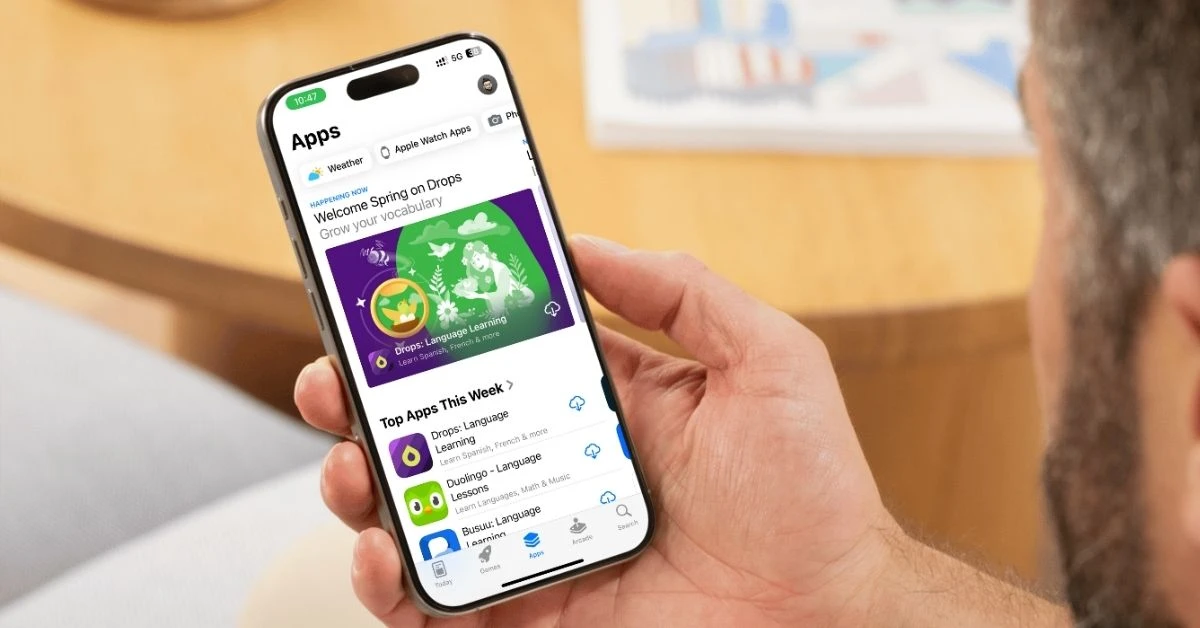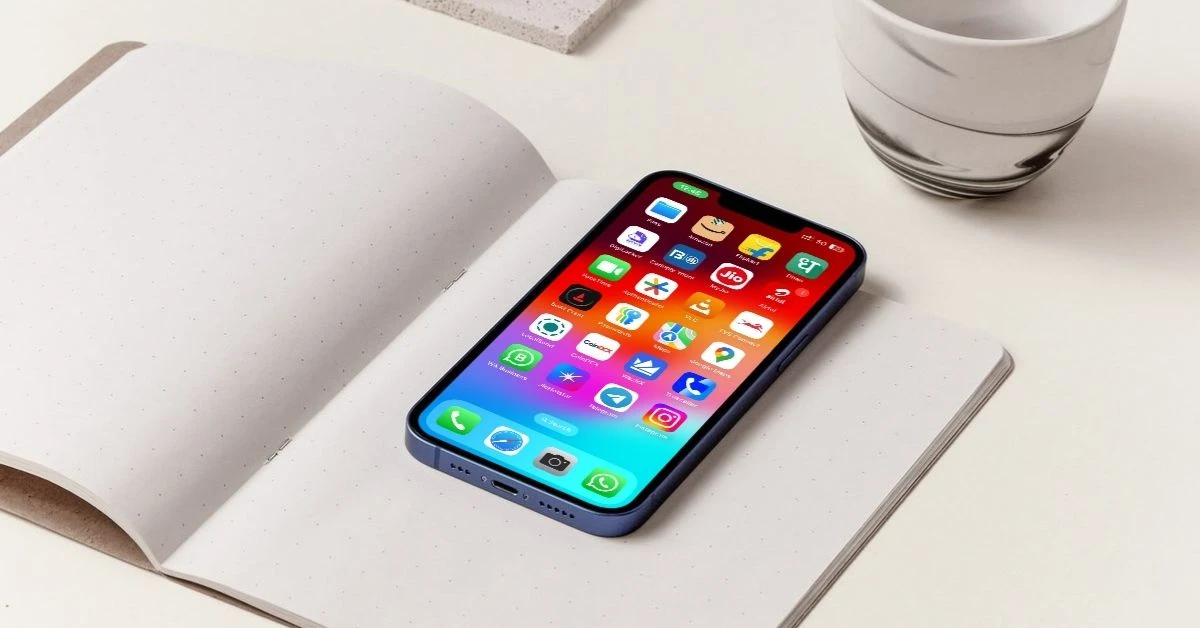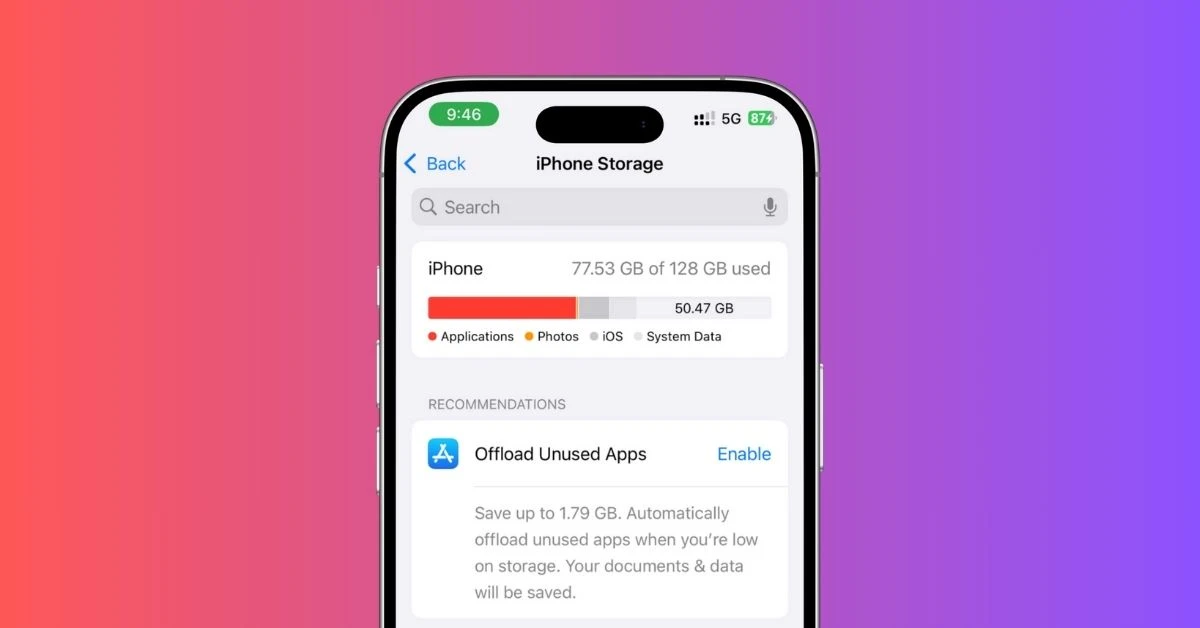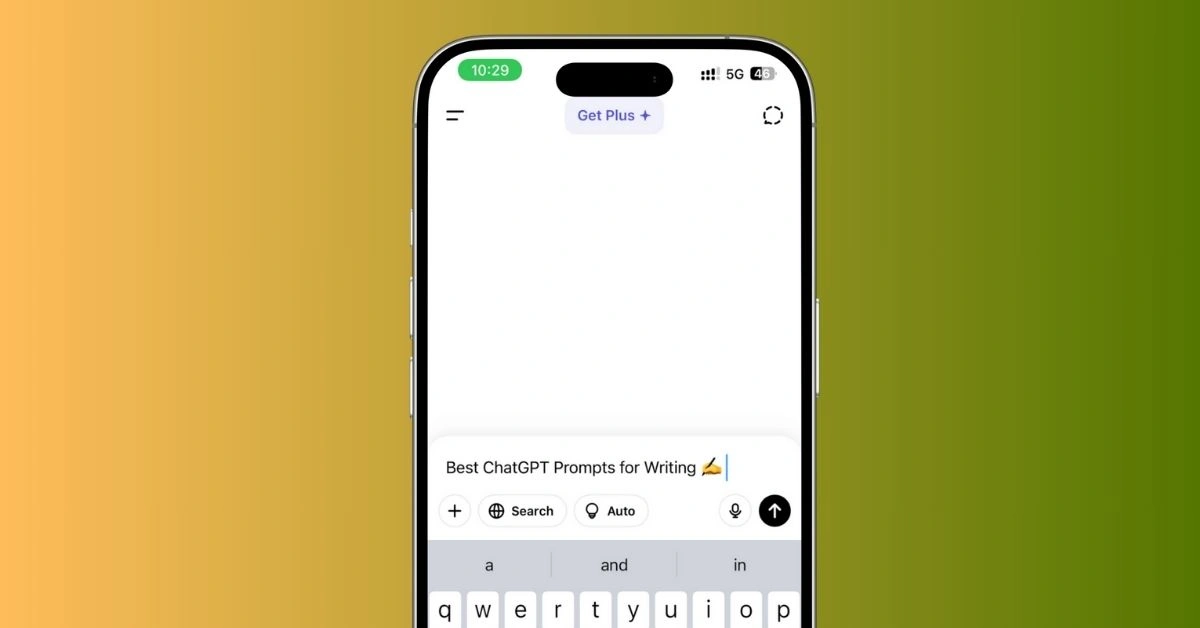How Many iPhone Apps Are Free vs Paid? (2025 Update)
The Apple App Store is home to millions of apps, ranging from productivity tools to entertainment platforms.
But have you ever wondered how many of these apps are free and how many require payment?
In 2025, the debate between free and paid apps is more relevant than ever as developers continuously adapt their monetization strategies to meet user expectations.
Over the years, the app economy has shifted dramatically.
In the early days of the App Store, paid apps were the norm.
However, today, the vast majority of iPhone apps are free, relying on in-app purchases, subscriptions, or ads for revenue.
But just how many apps fall into each category?
In this article, we’ll break down the latest statistics on free vs paid apps, explore user spending habits, and analyze trends shaping the future of mobile applications.
Whether you’re a developer, marketer, or everyday iPhone user, understanding these insights will help you navigate the evolving app ecosystem.
Overview of the Apple App Store in 2025
The Apple App Store remains one of the most influential digital marketplaces, hosting millions of apps across various categories.
Over the years, Apple has refined its platform, balancing quality control with innovation.
In 2025, the App Store continues to grow, reflecting the ever-evolving needs of iPhone users.
But just how many apps are available, and which categories dominate the market?
1. How Many Apps Are on the App Store in 2025?
As of early 2025, the Apple App Store houses approximately 1.83 million apps, marking a steady increase from 1.803 million in 2023.
While this growth may seem slow, it’s a result of Apple’s stringent quality control, ensuring that only the best apps remain available.
However, this number is still lower than the all-time peak of 2.22 million apps recorded in 2021.
Since then, Apple has aggressively removed outdated, low-quality, and non-compliant apps to enhance the user experience.
2. Which App Categories Dominate the App Store?
With 1.83 million apps available, competition is fierce, but certain categories consistently attract the most developers and users.
As of 2024, the top 5 most populated app categories are:
- Games – 183,000+ apps (Always the biggest category, with both free and premium options)
- Business – 156,000+ apps (Includes productivity tools, finance apps, and management solutions)
- Education – 150,000+ apps (A mix of language learning, tutoring, and AI-driven study aids)
- Lifestyle – 130,000+ apps (Covers everything from fitness to home automation)
- Utilities – 120,000+ apps (Includes file managers, VPNs, and customization tools)
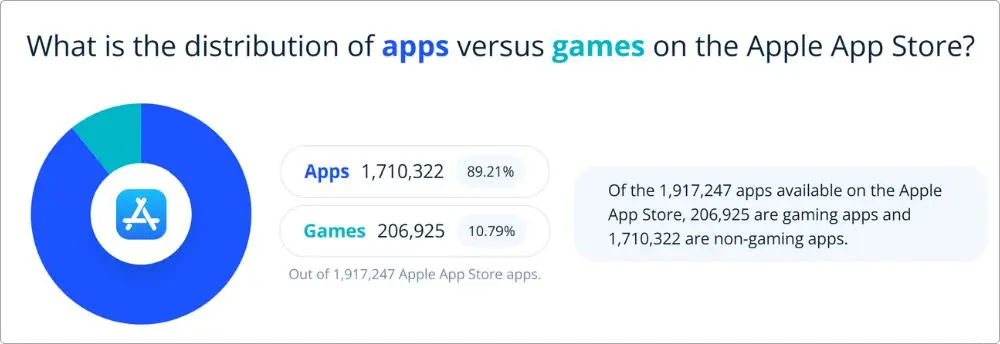
4. How Has the App Store Changed Over the Years?
The App Store has seen massive shifts over the last decade.
- App Count Decline – From its peak of 2.22 million apps in 2021, Apple has reduced the total count to 1.83 million in 2025 due to strict removal policies.
- Subscription Boom – More apps are now free-to-download but monetize through subscriptions rather than upfront purchases.
- Rise of AI Apps – AI-powered apps, especially in productivity and education, are growing rapidly, offering smarter tools for users.
- Higher Revenue Despite Fewer Apps – Although there are fewer apps, total App Store revenue continues to climb, showing that developers are making more money per app.
5. What Does This Mean for iPhone Users?
For users, this means a better, more curated experience with higher-quality apps.
It also means more apps are free to download, but users might end up paying for features through subscriptions or in-app purchases.
So, how does this tie into our main question—how many apps are actually free vs paid?
Let’s dive into that next.
Free vs. Paid Apps: The Big Picture
The Apple App Store has undergone significant transformations since its inception, particularly in the distribution of free and paid applications.
Understanding this dynamic offers valuable insights into developer strategies and user preferences in 2025.
1. Current Distribution of Free and Paid Apps
As of January 2025, data from 42matters indicates that the App Store features approximately 1.83 million apps.
Of these:
- Free Apps: About 1,830,653 applications, accounting for 95.4% of the total.
- Paid Apps: Approximately 88,324 applications, making up 4.6% of the total.
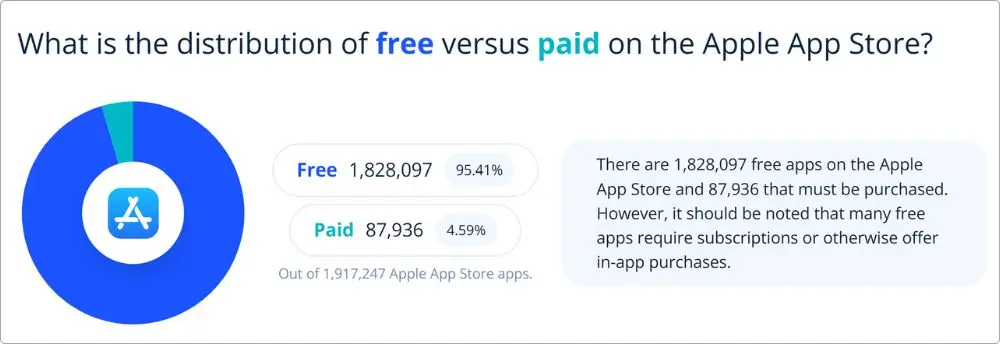
This overwhelming prevalence of free applications underscores the industry’s shift towards alternative monetization strategies beyond upfront purchase costs.
2. Which Categories Have the Most Free vs. Paid Apps?
While 95.4% of all apps on the App Store are free, some categories have a higher proportion of paid apps than others.
Here’s a breakdown of how different app categories compare:
i) Categories Dominated by Free Apps
- Games – Most mobile games are free-to-play with in-app purchases (IAPs) for virtual items, premium features, or ad removal.
- Productivity – Apps like calendars, to-do lists, and note-taking tools are often free but offer subscriptions for premium features.
- Education – Many language-learning and study apps use the freemium model, with limited lessons for free and full courses available via subscription.
ii) Categories with More Paid Apps
- Creative & Design Apps – Many premium graphic design and video editing tools require a one-time purchase or subscription.
- Entertainment & Media – Streaming services and e-book readers often require paid memberships.
- Professional & Business Software – High-end business apps, coding tools, and professional suites often have a paid entry model.
3. Historical Trends and Shifts
In the early days of the App Store, a larger proportion of applications were paid.
However, with the introduction of in-app purchases and subscription models, developers began favoring free downloads to attract a broader user base.
This transition has led to the current dominance of free apps, with monetization occurring through:
- In-App Purchases (IAPs): Offering additional features, content, or digital goods within the app.
- Subscriptions: Providing ongoing premium content or services for a recurring fee.
- Advertisements: Generating revenue by displaying ads to users.
These models have proven effective, with free apps contributing significantly to the App Store’s overall revenue.
4. Comparison with Other Platforms
The trend towards free applications is not unique to the Apple App Store.
For instance, as of January 2025:
- Google Play Store: Approximately 97% of apps are free.
This similarity highlights a broader industry movement towards free applications with alternative monetization strategies across major platforms.
5. Implications for Developers and Users
For developers, offering free apps can lead to:
- Increased Downloads: Lower barriers to entry encourage more users to try the app.
- Enhanced User Engagement: Free access allows users to experience the app before committing financially.
- Diverse Revenue Streams: Utilizing IAPs, subscriptions, and ads can create multiple income sources.
For users, the prevalence of free apps means:
- Wider Access: Ability to explore a vast array of applications without initial costs.
- Flexibility: Option to choose whether to invest in additional features or content.
- Exposure to Ads: Many free apps incorporate advertisements, which can impact the user experience.
The Rise of Freemium & Subscription Models
In the dynamic landscape of the Apple App Store, monetization strategies have undergone a significant transformation.
The traditional one-time purchase model has largely given way to more flexible and lucrative approaches, notably the freemium and subscription models.
1. Understanding the Freemium Model
The term “freemium” combines “free” and “premium,” encapsulating a strategy where apps are offered at no initial cost, enticing users with basic functionalities.
Revenue is then generated through in-app purchases (IAPs) for premium features, additional content, or digital goods.
This model lowers the barrier to entry, allowing users to experience the app before committing financially.
Apple’s guidelines support this approach, enabling developers to offer various in-app purchase types, including consumables, non-consumables, and subscriptions.
2. The Subscription Surge
Subscriptions have emerged as a dominant monetization strategy, providing developers with a steady revenue stream and users with continuous value.
In 2023, global consumer spending on subscription apps reached approximately $89.3 billion, reflecting a 2.8% increase from the previous year.
This growth underscores the effectiveness of the subscription model in fostering user engagement and financial sustainability.
3. Categories Embracing Subscriptions
While initially prevalent in sectors like streaming services and news outlets, subscriptions have permeated various app categories:
- Health & Fitness: Apps offering personalized workout plans and wellness content.
- Productivity: Tools providing enhanced features for organization and task management.
- Creative Software: Applications delivering advanced functionalities for design and editing.
This diversification indicates a broader acceptance and expectation of subscription-based models across different user demographics.
4. Developer Insights and Strategies
For developers, the shift towards freemium and subscription models necessitates a focus on delivering ongoing value to retain subscribers.
Key strategies include:
- Regular Content Updates: Keeping the app experience fresh and engaging.
- Personalization: Tailoring content and features to individual user preferences.
- Transparent Communication: Clearly conveying the benefits of premium offerings and any changes to subscription terms.
These approaches are vital in minimizing churn rates and maximizing lifetime value per user.
5. User Considerations
For consumers, the prevalence of freemium and subscription models offers both opportunities and challenges:
- Try Before You Buy: Users can assess the app’s value proposition before financial commitment.
- Cost Management: While individual subscriptions may seem affordable, multiple subscriptions can accumulate significant monthly expenses.
- Feature Awareness: Understanding which features are free versus premium helps in making informed decisions.
Users are encouraged to regularly review their subscriptions to ensure alignment with their current needs and budget.
User Spending Habits on the App Store
The Apple App Store has experienced significant growth in consumer spending, reflecting the increasing reliance on mobile applications for various aspects of daily life.
Understanding these spending habits provides valuable insights into the app economy and user preferences.
1. Current Consumer Spending Trends
In 2024, the Apple App Store generated approximately $103.4 billion in revenue, more than double the $46.7 billion earned by the Google Play Store during the same period.
This substantial revenue underscores the App Store’s dominance in the mobile app marketplace.
2. Projected Growth
Looking ahead, global consumer spending on premium apps, in-app purchases, and subscriptions across both the Apple App Store and Google Play is forecasted to reach $270 billion annually by 2025, nearly 2.5 times the amount spent in 2020.
This projection highlights the sustained growth and monetization potential within the app ecosystem.
3. Factors Influencing Spending Habits
Several key factors contribute to user spending behaviors on the App Store:
- Subscription Models: The rise of subscription-based apps has led users to allocate funds toward ongoing services, such as streaming platforms, fitness programs, and productivity tools.
- In-App Purchases (IAPs): Many free apps offer additional content or features through IAPs, encouraging users to make incremental purchases to enhance their app experience.
- Quality and Utility: Users are more willing to invest in apps that provide substantial value, such as those that improve productivity, offer unique functionalities, or deliver high-quality entertainment.
4. Regional Variations
Spending habits can vary significantly across different regions due to factors like economic conditions, cultural preferences, and smartphone penetration rates.
For instance, developed markets with higher disposable incomes may exhibit greater willingness to pay for premium apps and subscriptions compared to emerging markets.
5. Implications for Developers
Understanding these spending habits is crucial for developers aiming to monetize their applications effectively.
Strategies to consider include:
- Offering Freemium Models: Providing a free version with optional paid enhancements can attract a larger user base while still generating revenue from those seeking advanced features.
- Enhancing User Experience: Investing in app quality and user satisfaction can lead to higher retention rates and increased willingness to spend on IAPs or subscriptions.
- Localized Pricing Strategies: Adjusting pricing models to align with regional economic conditions and user expectations can optimize revenue across diverse markets.
Conclusion and Future Outlook
The Apple App Store has evolved dramatically since its launch, with a significant shift from paid apps to freemium and subscription-based models.
Today, nearly 95.4% of all apps are free, reflecting a broader industry trend where in-app purchases, ads, and subscriptions drive revenue rather than upfront payments.
Key Takeaways
- Free Apps Dominate – The vast majority of apps are free, with monetization happening through in-app purchases, ads, or subscriptions.
- Subscription Growth Continues – In 2024, global consumer spending on subscription apps reached $89.3 billion, and this trend is expected to rise.
- Users Prefer Free, But Pay for Value – While most users download free apps, they are willing to pay for ad-free experiences, premium features, and professional tools.
- Developers Favor Freemium Models – Instead of charging upfront, most developers use free-to-download apps with premium upgrades to maximize revenue.
What’s Next for the App Economy?
- AI & Personalization – More apps will use AI-powered recommendations to enhance user engagement and encourage spending.
- New Monetization Models – Expect to see pay-as-you-go pricing, microtransactions, and bundled app subscriptions grow in popularity.
- Regulatory Changes – With increasing scrutiny on in-app purchase fees, Apple may face pressure to adjust its App Store commission model.
The future of the App Store will be shaped by user behavior, developer innovation, and evolving business models.
Whether free, freemium, or paid, one thing is clear: the app economy is only getting bigger.
This analysis provides valuable insights into how the App Store operates today and what we can expect in the coming years.
With billions spent annually on mobile apps, both users and developers must navigate a landscape where free apps dominate but premium experiences still hold strong value.

